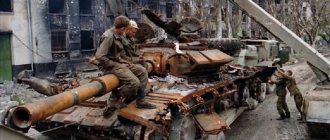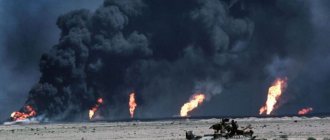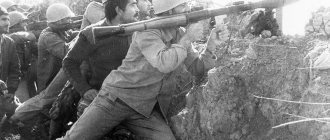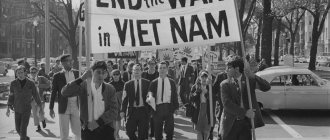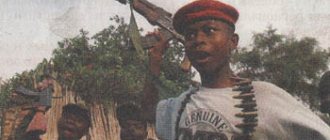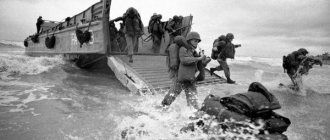Lenta.ru continues a series of articles about the first Chechen war. Federal troops entered Chechnya on December 11, 1994—combat operations began that would last more than a year and a half, claiming and maiming tens of thousands of lives. Lenta.ru spoke with soldiers and officers who were in Chechnya from 1994 to 1996 to find out how the New Year's assault on Grozny was prepared, what prevented a quick and victorious operation, and why they do not consider the end of the war a victory.
This text from the Lenty.ru series on the 25th anniversary of the Chechen war was first published on December 11, 2022. It is now being republished. Read the rest of the series HERE
Before and after the October Revolution
Russia began to expand its territories into the Caucasus in the 10th century. Subsequently, the struggle for these territories continued for centuries. At the beginning of the 20th century, tsarism relied on violence against the Caucasian peoples. After the revolution, Grozny constantly changes hands. Since 1918 it has been the Terek SSR, since 1921 it has been the Mountain ASSR, since 1922 it has been the Chechen Autonomous Region of the RSFSR. Since 1934 it has been the Chechen-Ingush Autonomous Soviet Socialist Republic.
The collapse of the USSR has a negative impact on the situation in the North Caucasus. Already in 1990, the National Congress of the Chechen People was formed in Chechnya under the leadership of Dudayev Dzhokhar. The purpose of the created society is one - secession from the Union and the creation of a separate state - the Chechen Republic.
Perestroika period
By 1991, dual power actually sets in. The administration of the Chechen-Ingush Autonomous Soviet Socialist Republic continues to operate, and in parallel the government of the Chechen Republic of Ichkeria operates. This republic is led by Dudayev.
Naturally, this situation cannot last long. And Dudayev takes the first step. He actually starts a revolution. Supporters of the new republic seize the television center, radio and the Supreme Council.
On October 27, 1991, elections are held in Chechnya, Dudayev comes to power. In response to this, Yeltsin introduces a state of emergency on the territory of the republic. So why did the war start in Chechnya? In fact, this decree became the first impetus for the outbreak of a military conflict.
The separatists, or self-elected authorities, seize almost all the ammunition stored on the territory of the republic. In 1992, the head of the Russian Ministry of Defense transferred half of all weapons stocks to the authorities of the republic, since there was no longer any possibility of withdrawing them. In fact, the Russian authorities are missing the opportunity to prevent an impending military conflict. The Russian Federation, however, even manages to create an opposition in the republic, but this does not produce results. These are only small armed groups that are not able to resist the militants.
In what year did the war in Chechnya begin? Unofficially, from 1991 to 1994, there is actually already a war going on, but these are still minor skirmishes between militants and small groups of armed oppositionists. The official dates of the First Chechen Campaign are considered to be 1994-1996.
Operation Jihad (August 6–22, 1996)
On August 6, 1996, detachments of Chechen separatists numbering from 850 to 2000 people again attacked Grozny. The separatists did not aim to capture the city; They blocked administrative buildings in the city center, and also fired at checkpoints and checkpoints. The Russian garrison under the command of General Pulikovsky, despite significant superiority in manpower and equipment, was unable to hold the city, suffering significant losses (over 2,000 military personnel killed, missing and wounded).
Simultaneously with the assault on Grozny, the separatists also tried to take the cities of Gudermes and Argun. In the city of Argun, checkpoints in the Shali, Gudermes and Grozny directions were controlled by OMON and SOBR officers and were not captured by the separatists. Thanks to the city elders and the leadership of the commandant’s office, it was possible to avoid losses from the troops, riot police and special forces. From August 5 to 6, 1996, the battle raged all night at the Gudermes train station and people died; the city did not give up without a fight.
According to Oleg Lukin, it was the defeat of Russian troops in Grozny that led to the signing of the Khasavyurt ceasefire agreements.
Positions of Russian troops in Grozny, attacked by militants, August 1996
Operation Jihad in Grozny, August 1996
First war
On November 26, 1994, Yeltsin decides to send troops into Chechnya. An attempt to take Grozny with a tank attack ended in a fiasco. Then tanks without identification marks entered the city.
When did the war in Chechnya begin and end? On December 11, 1994, Yeltsin signed Decree No. 2169, after which troops were brought into the territory of the republic and a full-scale war began. 10 days before this, Russia launched air strikes on the largest airports in Kalinovsky and Khankala.
The war lasted 2 years. No one has been able to assess the real damage of this conflict. What is known is that both sides suffered financial losses, not to mention the huge number of deaths.
There was disorganization in actions in the ranks of the Russian troops. The Russian government itself had to solve its own problems; it didn’t really care about Chechnya. Some citizens of the Russian Federation managed to make good money from the military conflict. It was from Russia that the main supplies of weapons were carried out.
At the beginning of the war, until March 1995, Russian troops even advanced successfully, there were no large losses, they even managed to launch an assault on Grozny. However, the military faced a problem - the city was so densely built up that the tanks simply got stuck in the streets.
The Russian government did not take into account the human casualties. It is believed that more than 1.5 thousand Russian soldiers died or went missing during the assault. More than 150 units of military equipment were disabled.
Why did the war start in Chechnya? As military and political analysts say, everything was connected with the illiterate leadership and actions of the government of the USSR and then the Russian Federation. The country already had an unstable political situation that they could not cope with. What can we say about the Caucasus, where nationalist sentiments intensified almost instantly, and militants tried to take complete control of the region?
“This is a real takeover in the center of Moscow”
On October 23, 2002, Shamil Basayev organized a hostage-taking in the capital's Theater Center on Dubrovka. In total, more than 900 people became prisoners of the 40 suicide bombers and terrorists led by Movsar Barayev who broke into the Nord-Ost performance.
Armed militants jumped onto the stage right during the performance - some spectators took this for the director's idea.
The first thought was how great they integrated the Chechen syndrome into the plot. The idea that this was a real seizure in the center of Moscow did not occur to me at all. And even when it became clear, I still couldn’t come to terms
Svetlana GubarevaFormer hostage
During intense negotiations, the authorities managed to secure the release of several dozen hostages, including 25 children. But the terrorists refused to make further concessions - they demanded an immediate end to the war and the withdrawal of federal troops from Chechnya. After the militants shot several hostages, the security forces decided to storm the building of the Theater Center.
Theater center on Dubrovka, captured by terrorists
Photo: Dmitry Dukhanin / Kommersant
During a special operation, during which sleeping gas was used, all the terrorists, including suicide bombers, were killed. In this case, 130 hostages died. The terrible terrorist attack on Dubrovka shocked Russia - but even it was not the bloodiest on Basayev’s account. Two years later, the whole world shuddered at what the terrorist committed in Ossetian Beslan.
Briefly about the important
In January 1995, they still managed to capture the presidential palace. In February of the same year, Grozny was completely blocked and a temporary truce was concluded. But this does not stop the militants; there is complete chaos on the streets and periodic shootings.
In March, several cities are taken under control, and in April the fighting in the lowland part of the republic ends.
On June 14, 1995, a terrible event occurred - a terrorist attack in Budennovsk. Already on June 19, the parties manage to sit down at the negotiating table. From December 14 to 17, elections are held in the republic and Doku Zavgaev becomes the head.
On April 21, 1996, Dzhokhar Dudayev died. On August 31 of the same year, the Khasavyurt Agreements were signed. Russian troops leave the territory of the republic, and the decision on the legal status of the state is postponed until 2001.
On January 27, 1997, Aslan Maskhadov, who in his principles is not much different from Dudayev, becomes the president of the republic. However, he has no authority and has to constantly make compromises with the militants.
After the war, the republic finds itself in a deplorable state. Why the war started in Chechnya is no longer interesting to anyone. The infrastructure has been destroyed, and those who were nationalists before the conflict have become ordinary bandits. Almost all representatives of other nationalities left the republic. A new business is thriving in Chechnya - kidnapping. The surrounding areas suffer the most from this.
Militant attack on Grozny (March 6-8, 1996)
On March 6, 1996, several groups of militants attacked Grozny, controlled by Russian troops, from various directions. The militants captured the Staropromyslovsky district of the city, blocked and fired at Russian checkpoints and checkpoints. Despite the fact that Grozny remained under the control of the Russian armed forces, the separatists took with them supplies of food, medicine and ammunition when they retreated. The losses of the Russian side, according to official data, amounted to 70 people killed and 259 wounded.
Riot police blocked by Chechen militants in Grozny, March 6, 1996
Second war
The second military conflict lasted 10 years, from 1999 to 2009. Why did the war start in Chechnya? In fact, it was a continuation of the first war. Russian authorities called it a counter-terrorism operation.
Since 1996, the Russian government has repeatedly offered assistance in resolving this issue to the republic, in which there is complete devastation and banditry is rampant, but Maskhadov does not agree to rapprochement.
A new problem appears. There is a new religious movement in the republic – Wahhabism. Its formation is being carried out by bandits who establish a new faith with weapons. In fact, the republic is engulfed in civil war.
The Chechen authorities practically do not oppose this, so the situation is only getting worse.
How did Chechnya first join Russia?
Relations between Chechnya and Russia have been difficult since ancient times, even before their unification in 1859. At the very beginning of the 19th century, the borders of the Russian Empire expanded due to the addition of Georgia and Azerbaijan to its lands. But managing the new territories was problematic because of the nearby Chechen lands; some of their inhabitants attacked Russian people, robbed and took prisoners.
In 1816, Lieutenant General Alexey Petrovich Ermolov was sent to Georgia. Under his leadership, they began to build roads and erect fortresses next to the Sunzha River, which is a tributary of the Terek, thereby forming the Sunzha Line.
Alexey Petrovich responded to the aggressive attacks of the Chechens with tough actions, suppressing attempts to interfere with his mission.
In 1827, Ermolov had to resign by order of the Tsar.
Then a holy war began against the Russian army, for which the Chechens united with the inhabitants of Mountainous Dagestan. The founder of this gazavat was Magomed Yaragsky, and this period ended with Imam Shamil, who was captured in the summer of 1859, after which the Chechen lands expanded Russian borders.
Start of hostilities
On August 7, 1999, the militant invasion of Dagestan begins. This is one of the reasons why the war started in Chechnya for the second time. Russia and Dagestan are being overwhelmed by a new wave of terrorist attacks. And already on September 30, 1999, Russian troops entered Chechnya.
On December 26, 1999, the assault on Grozny began, which was cleared of militants by February 6, 2000.
V.V. Putin is already in power in Russia, and he refuses active hostilities, so the war continues until 2009. At some point, he realizes that it cannot last forever, and begins to actively persuade the government of the republic to cooperate. A positive solution to this issue is affected by the terrorist attack in Grozny, during which more than 50 people are killed. Akhmat Kadyrov dies from his injuries at the Dynamo stadium. The population is beginning to not understand why the militants fought in Chechnya and why do the residents of the republic need this?
Kadyrov’s son, Ramzan, comes to power. He perfectly understands the situation in the republic and the futility of the Islamists’ resistance and takes a course towards Russia. The people support him, people are too tired of the war.
The decree canceling the official military campaign on the territory of Chechnya was signed by D. Medvedev in April 2009, and the troops were withdrawn.
“For every wounded person we kill 20 children”
On September 1, 2004, during a ceremony, 32 terrorists broke into Beslan school No. 1. Opening fire in the air, they herded the frightened teachers, children and their parents into the school gymnasium - in total, about 1,200 people were taken hostage.
Several suicide bombers also acted alongside the bandits: one of them accidentally blew itself up, killing 21 hostages. The militants shot prisoners for any reason - if they heard conversations or requests to be released.
For every wounded person, we kill 20 children. For every person killed, we kill 50 children. When the lights go out and during an assault, we blow up the entire school
One of the threats of the terrorists who seized the school in Beslan
The terrorists agreed to release only women with small children—mostly infants. The remaining hostages spent 2.5 days in a stuffy room without food and with a minimum amount of water. All this time, the authorities unsuccessfully tried to come to an agreement with the invaders, but they did not compromise - they demanded the immediate withdrawal of troops from Chechnya.
The assault on the school building began at about one o'clock in the afternoon on September 3, when two explosions occurred in the gym, causing its roof to collapse
The surviving hostages scattered - the militants immediately opened fire on them. The fleeing schoolchildren were covered by special forces: during the operation, according to various sources, from ten to 16 Alpha and Vympel fighters were killed.
The building of school No. 1 (Beslan), captured by terrorists
Photo: Grigory Sysoev / TASS
Some of the children were disoriented, so they could not get out of the room engulfed in fire and smoke and died. The militants placed some of the surviving schoolchildren on the windowsills as human shields, while others provided cover during the shootout with the security forces.
The fierce battle ended only at midnight. Only one terrorist survived - Nurpashi Kulaev: he tried to mix with the hostages, but he was quickly identified and detained. During one of the worst terrorist attacks in Russian history, 330 people were killed, 186 of whom were children. After the terrorist attack in Beslan, even many of his supporters turned away from Basayev.
Results of the confrontation
Perhaps no one even remembers how the war in Chechnya began, but the worst thing is that during all this time it has not been possible to calculate the real losses on either side. How many representatives of Slavic nationality were repressed on the territory of the republic is also unknown. It is impossible to count the number of people who have been kidnapped and gone missing.
In addition, almost the entire infrastructure of the republic is completely destroyed. First of all, we are talking about Grozny, which has been bombed and shelled more than once.
Stroke with sleeping pills
Knowing that the field commander would personally check the cargo, the special services decided to take advantage of this moment. It was decided to place a bomb, powered by a control panel, in the truck at the moment when it was parked. And so that the driver and the guard traveling with him would not suspect anything and could not interfere with the operation, sleeping pills were quietly added to their food: this was done by two intelligence officers.
They acted under the guise of waitresses (according to other sources, maids) of the hotel where the driver and security guard were staying for a rest.
The plan was successful: the targets fell asleep, and the truck was driven to a pre-prepared hangar, where an inventory of the cargo was compiled and explosives were placed in the KamAZ
At this time, another KamAZ was driven to the hotel for backup - the security forces did not rule out that the security guard and the driver would wake up ahead of time. But the fears turned out to be in vain: the dose of sleeping pills was calculated correctly - the carriers, who woke up four hours later, attributed their deep sleep to fatigue and calmly continued their journey.

